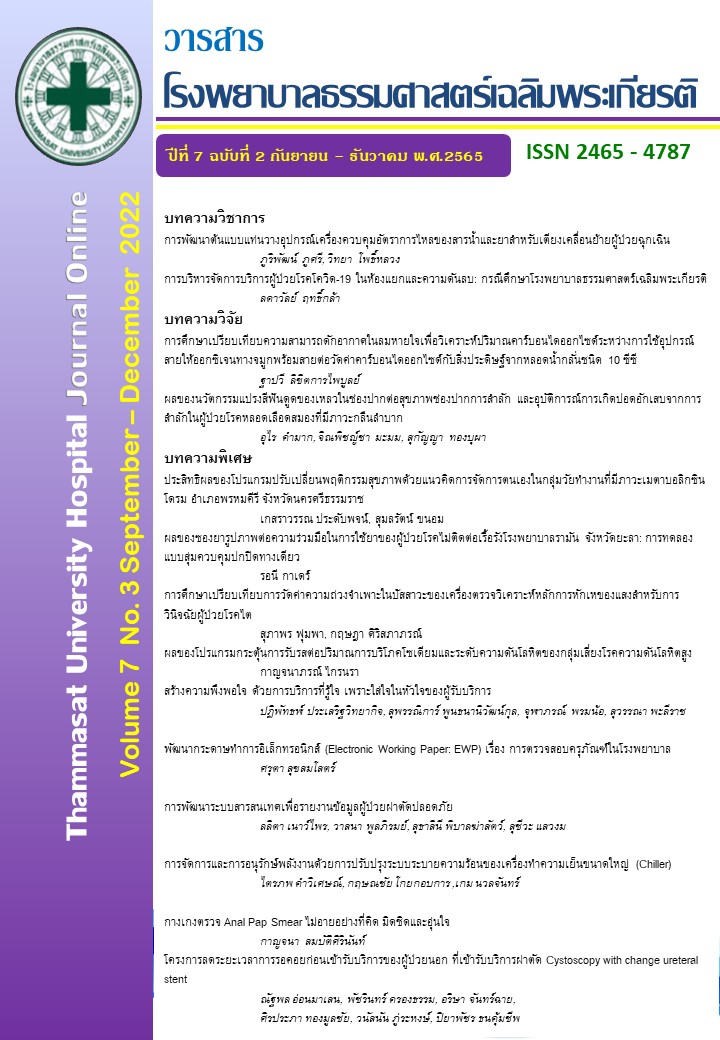Pictorial Label’s Impact on Medication Adherence of Non-Communicable Diseases Patients in Raman Hospital, Yala, Thailand: A Randomized, Controlled Single-blinded Trial
Keywords:
Pictorial Label, Pictogram, Non communicable diseases (NCDs)Abstract
Background: One of multiple factors leading to non-adherence is unable to understand drug labels. We encounter patients with high age and illegible due to low education level in rural area. They often face non-compliance drug related problems. Pictorial label is designed to increase patient understanding and better compliance.
Objective: To compare medication compliance of non-communicable diseases patient between using pictorial label (study group) and standard label (control group).
Material and methods: The study was a randomized, controlled single-blinded trial of 70 non-communicable diseases patients were randomly allocated (1:1) to either the study group or the control group using stratified-block randomization. Medication adherence was measured at the first two out-patient clinic visits. The results were then analyzed in percentage with 95% confidence interval using unpaired t-test according to normal distribution of the data. P-values less than 0.05 was considered significance. Data collection was between January to April 2022.
Result: Seventy patients were randomized (study group n=35, control group n=35) and completely followed throughout the study. Baseline characteristics of both group were indifferent. Medication adherence was significantly higher in the study group (mean ± S.D., 93.50 ± 5.15%) compared to the control mean ± S.D., 93.50 ± 5.15%) at the first out-patient clinic visit with %mean difference 17.90%, 95% CI 14.20%-19.60%; p <0.001). The second visit also found the similar trend in study group (mean ± S.D., 94.22 ± 4.86%) compared to the control mean ± S.D., 76.10 ± 6.05) at the first out-patient clinic visit with %mean difference 18.12%, 95% CI 14.88%-19.80%; p <0.001).
Conclusion: This study confirmed the increase in medication adherence of NCD patients by using pictorial label with the convention standard label especially the elderly and illegible patients who could not understand drug label.
References
Chaijinda K, Nilaward K, Chuamanochan P, Awiphan R. Development and evaluation of pictorial labeling system for Northern Thai patients with low literate skills. [PhD thesis]. Chiang Mai: Chiang Mai University; 2007. [in Thai]
Muangcharoen A. Development and evaluation of pharmaceutical pictograms in the Pga K'nyau, Sop Moei District, Mae Hong Son Province. [master thesis]. Chiang Mai: Chiang Mai University; 2008.
Angsuwattanakul, B., Lerkiatbundit, S. Development of pictograms for illiterate patients part 1: instructions on how to take tablets. Thai J Pharm Prac. 2014; 6: 41-60
Phimarn, W., Pianchana, P., Rungsungnoen, R., Ritthiya, L., Pattaradunpituk, W. Development and evaluation of pictorial labeling system for elderly patients with chronic disease. Isan J Pharm Sci. 2014; 9(Supplement): 109-15.
Limcharoen N, Wanishayakorn T, Lerkiatbundit S. Effects of Pictograms on How to Take Oral Tablets in illiterate Thai Muslim patients. Thai J Pharm Prac. 2017; 9: 294-306.
Dowse R, Ehlers M. Medicine labels incorporating pictograms do they influence understandingand adherence?. Patient Educ Couns. 2005; 58: 63-70.
Downloads
Published
How to Cite
Issue
Section
License
Copyright (c) 2022 Thammasat University Hospital Journal Online

This work is licensed under a Creative Commons Attribution-NonCommercial-NoDerivatives 4.0 International License.



